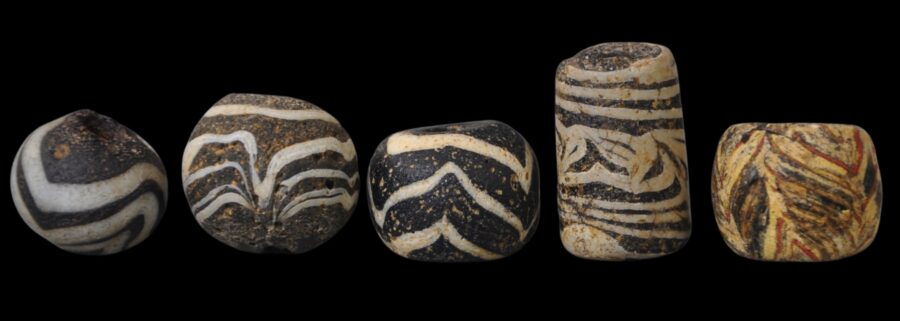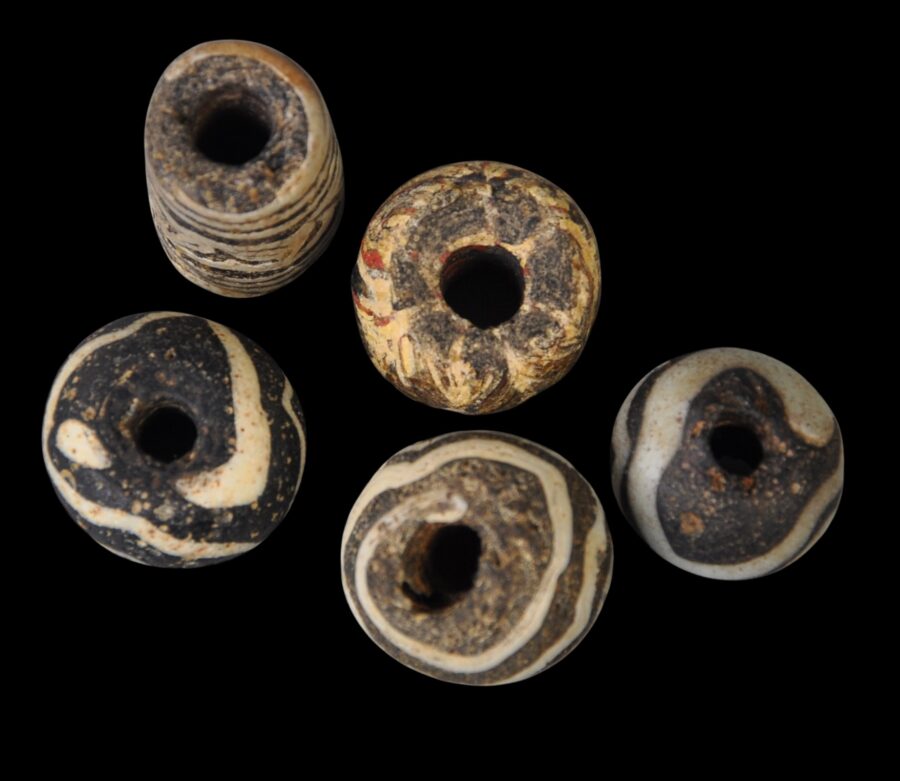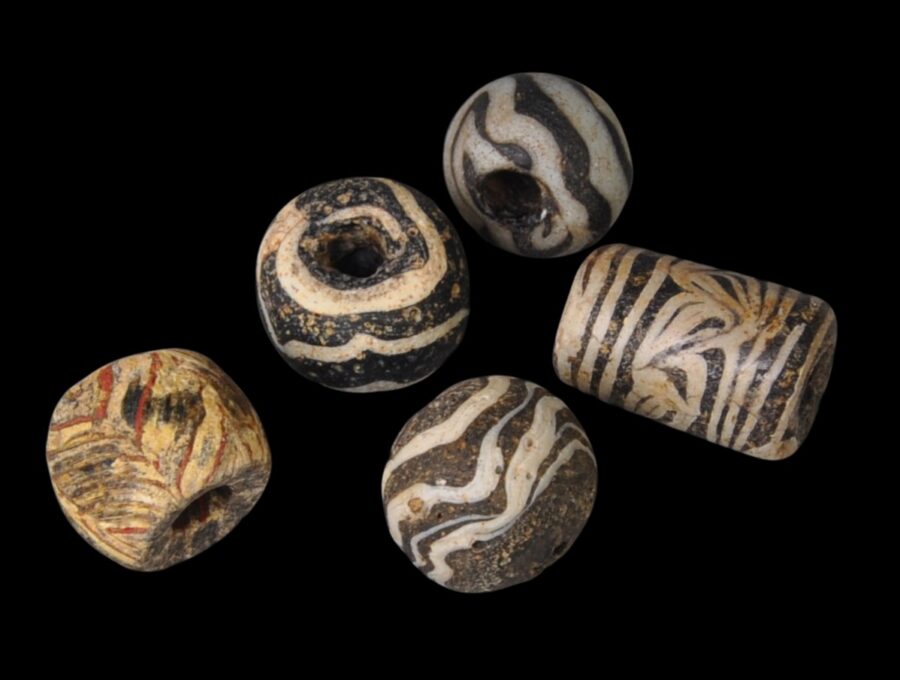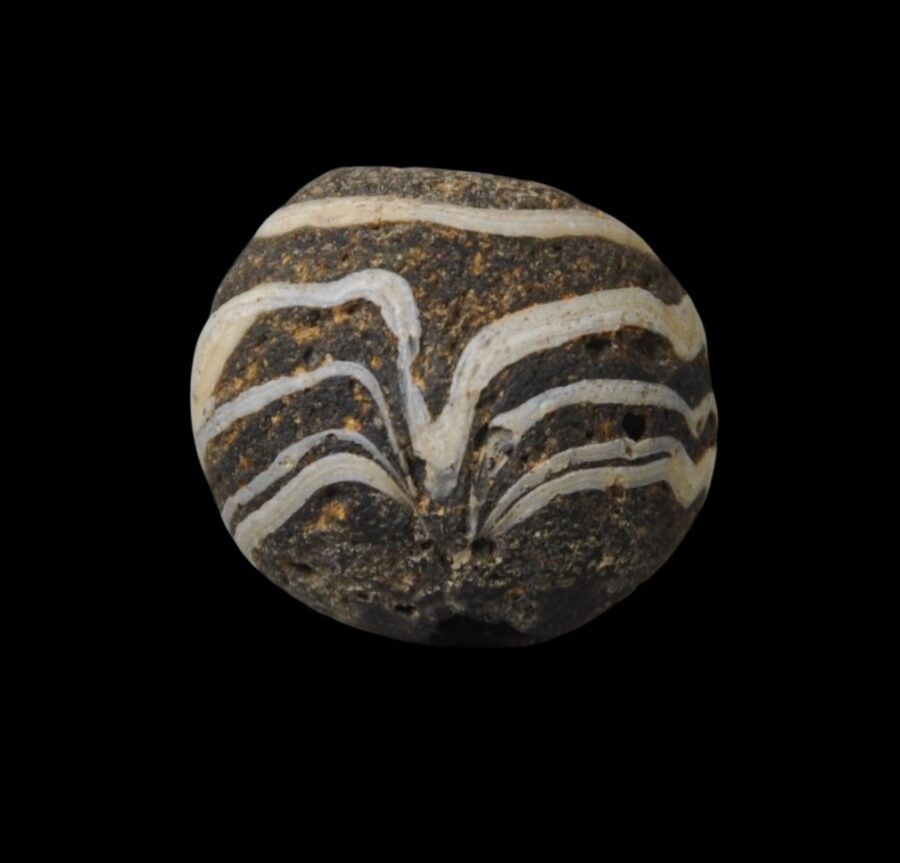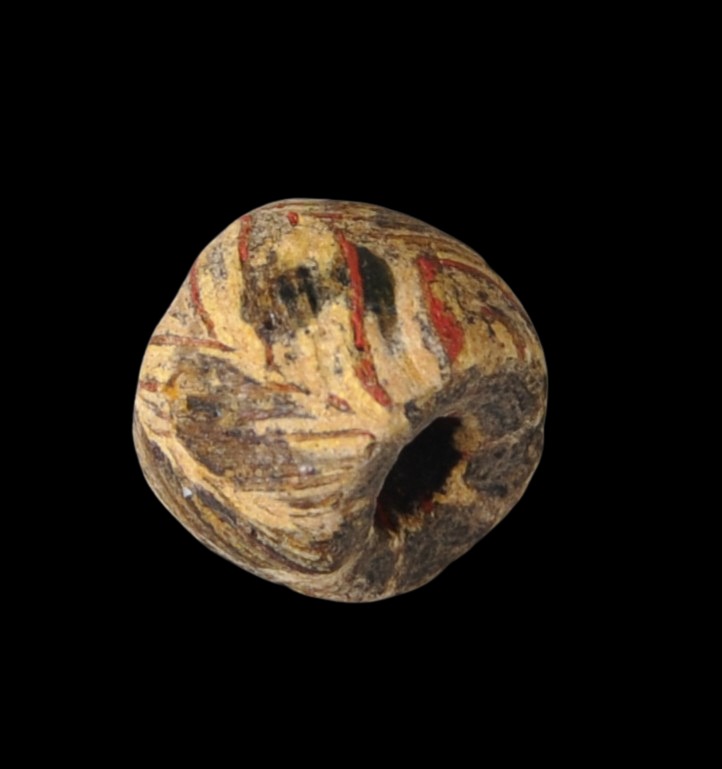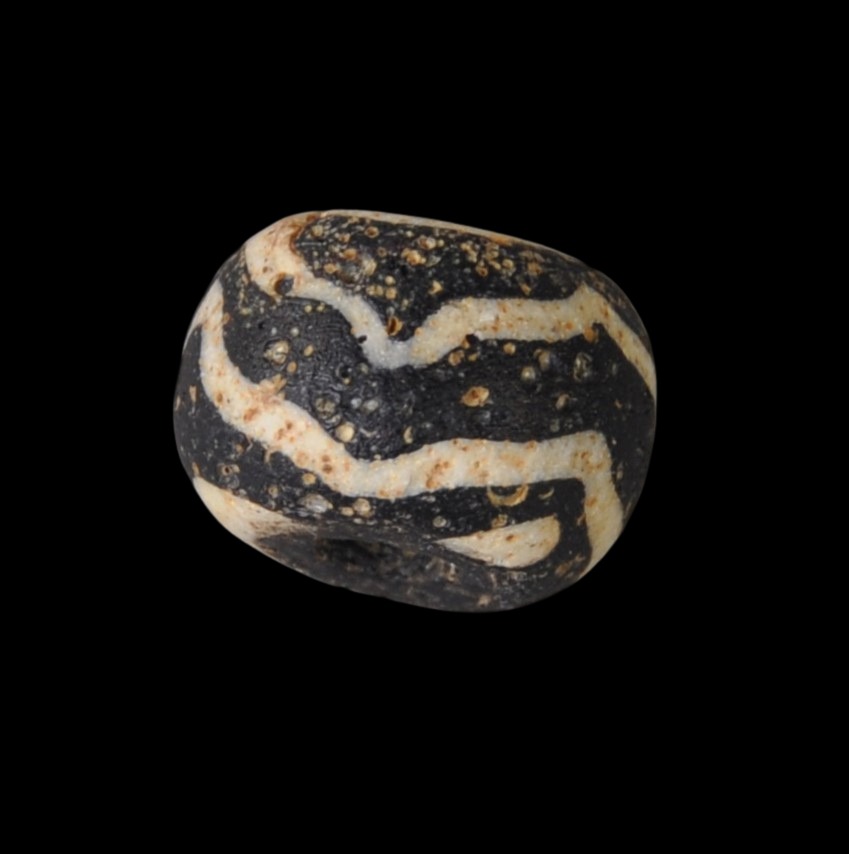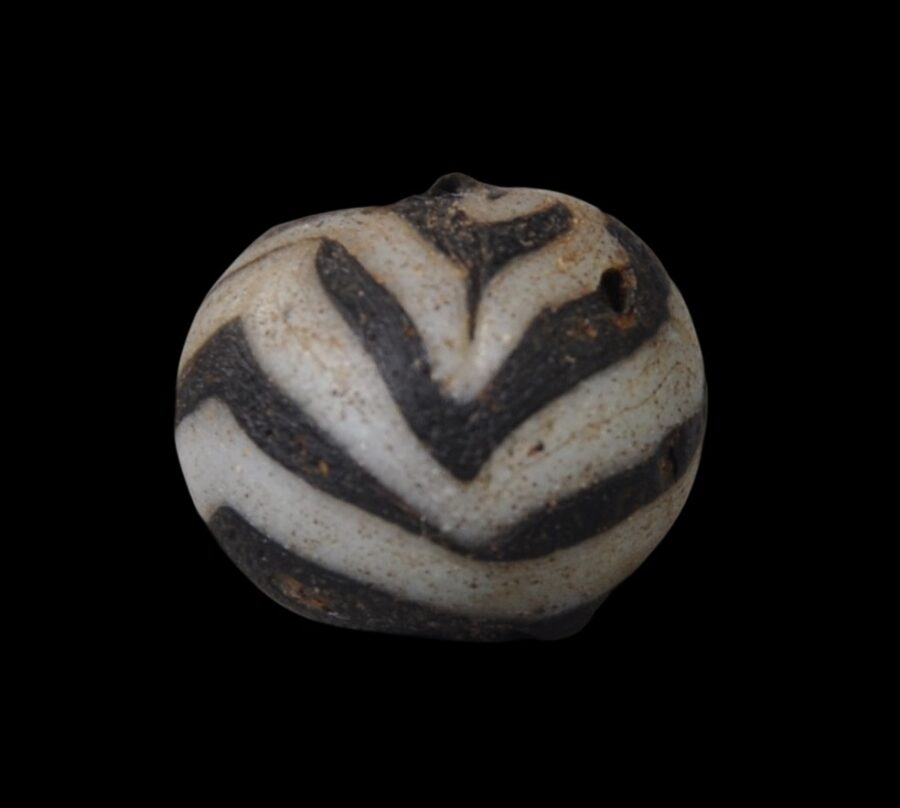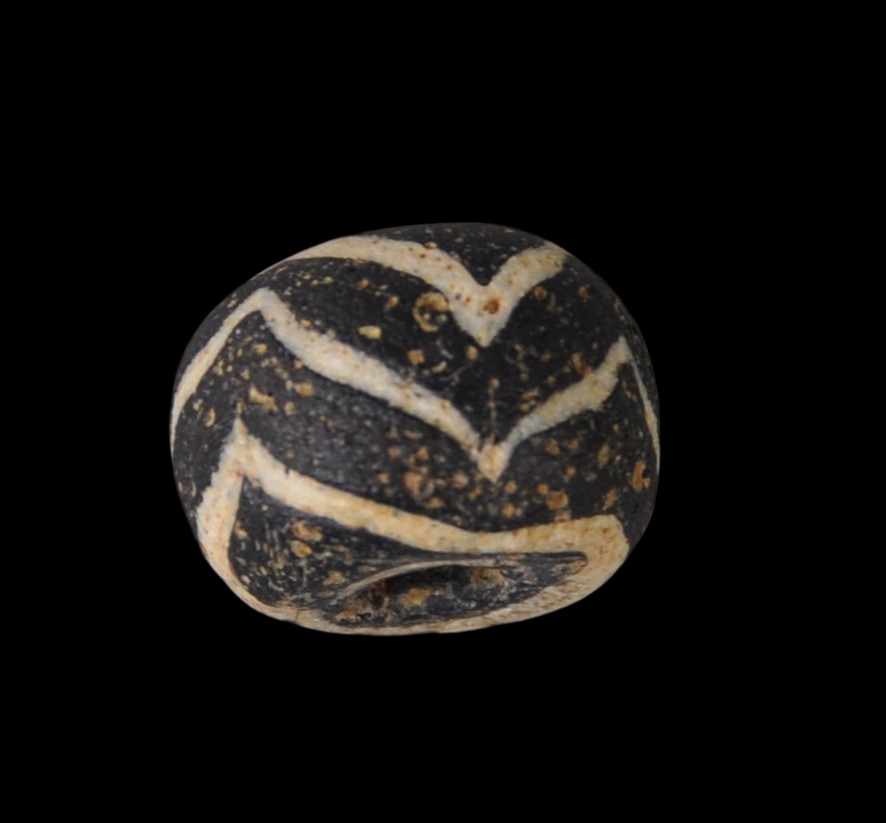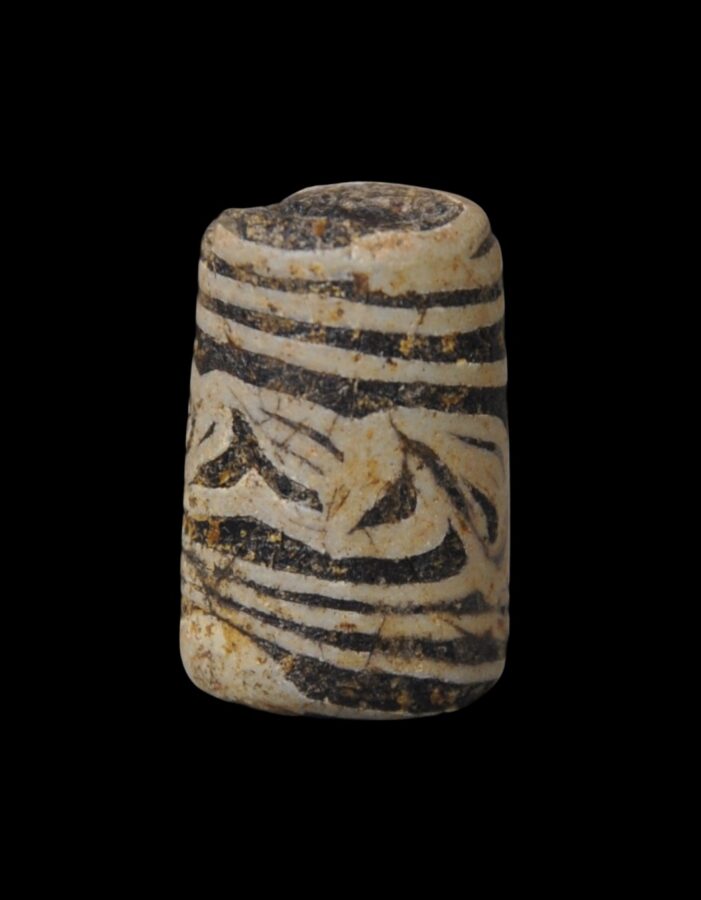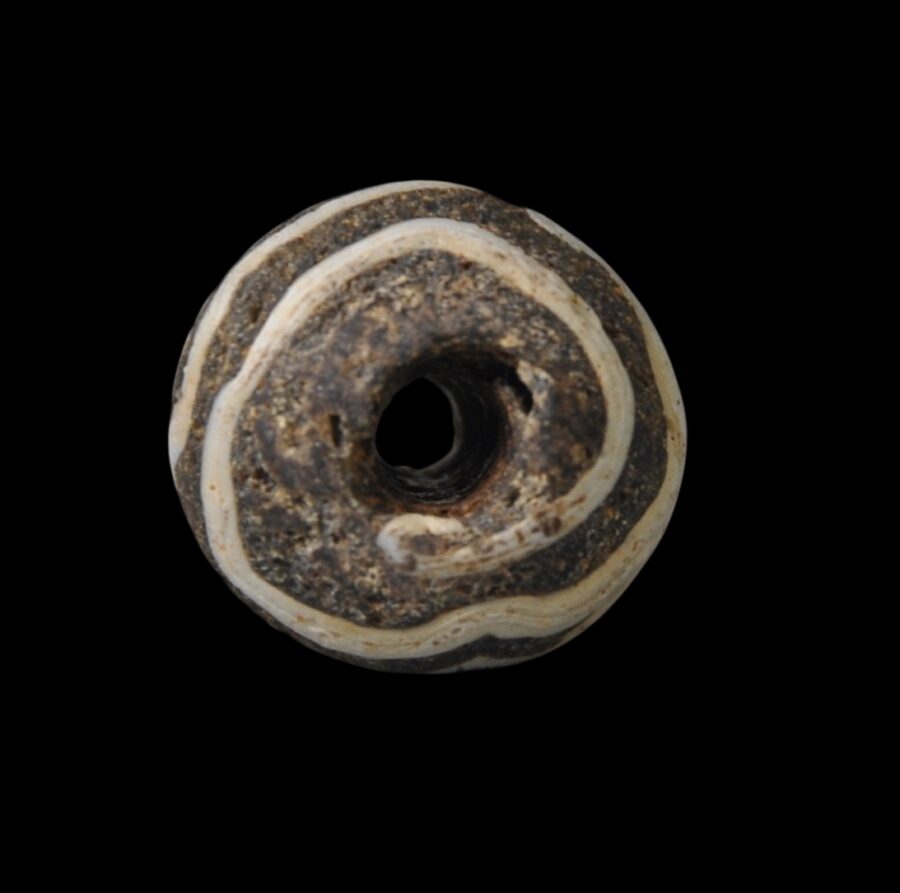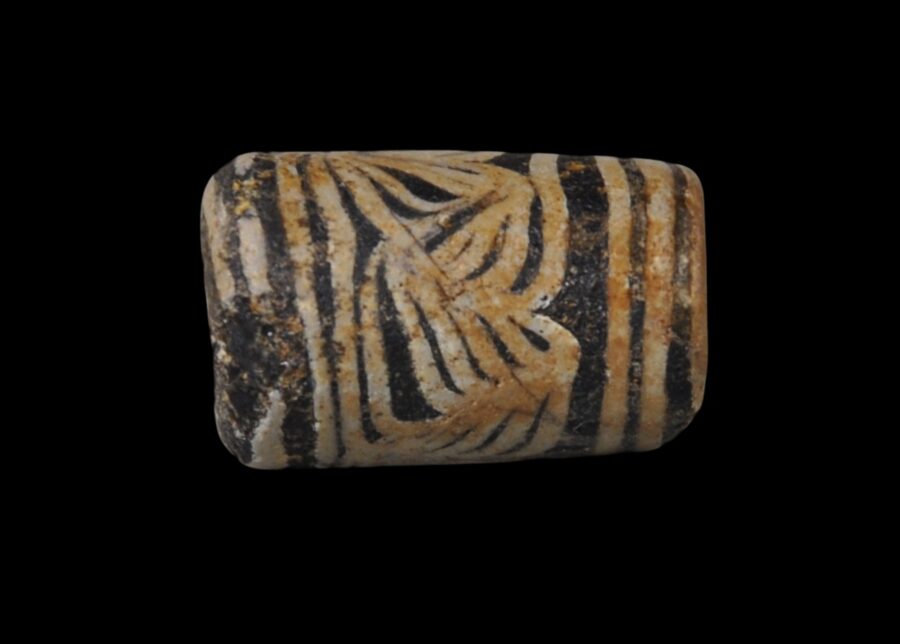Enquiry about object: 9828
Five Early Islamic Middle Eastern Glass Beads for the African Market
Middle East (probably Egypt or Syria) for the African Market (probably Mali) 900-1200 AD
diameter: between 1.3 and 1.9cm, length: between 1.3 and 2.1cm, combined weight: 25g
Provenance
private collection, Canada. The collection was carefully assembled over the last 50 years.
These five ancient Islamic glass trade beads were produced in the Middle East and were traded to Africa, particularly Mali and Mauritania, where today such beads are found in archaeological sites. There are four spherical beads and one cylindrical bead.
Four comprise white decoration trailed over black wound glass, made in Syria or Western Asia and dating to the 9th-12th century. The other more colourful example is a feather mosaic bead known as a mourfia bead, probably from Egypt, dating to around 800AD (and possibly earlier) and prized particularly by Mauritanians.
Mourfia beads are made by a fused rod or rolled pad technique.
The other four beads have been trailed and possibly combed to achieve the surface decoration. The use of trails and spiraling in glassware was a technique used in the Islamic world for centuries. Such irregular, wavy or ‘combed’ patterns achieved through hot working the glass started in Roman times and continued into the medieval Islamic period in areas such as Syria and Egypt and then was copied in the rest of the medieval Islamic world and beyond. Typically an item of say blue glass such as a bead would be turned, as a thin stream of molten glass was trailed over it, leaving the distinctive pattern.
See Panini (2007, p. 73, 75) for similar examples.
Islamic beads often were found in large quantities in archaeological sites near mosques, most probably because bead markets often were located near mosques. This suggests that such beads primarily were used for religious purposes, perhaps as prayer beads. Muslim prayer bead strands have either 33 or 99 beads upon which the 99 names of Allah can be recited. Beads used for this purpose generally are not distinguishable from other beads.
Beads also were worn to repel the Evil Eye. In many part of the northern Africa and the Middle East there was a widespread relief that certain people possessed an ability to bring misfortune on others who are caught by their glance. Accordingly, some would wear jewellery designed to repel the Evil Eye such as a model of the Hand of Fatimah, or a star or crescent. However, another way to avoid the Evil Eye would be to distract it by wearing attractive beads which would attract the eye.
The Islamic world encompasses parts of North Africa to the Middle East to South Asia to Southeast Asia and beyond. The Prophet Mohammed died in 632 AD and in less than one hundred years Muslim forces occupied regions from southern Spain to Pakistan. Much of this early progress encompasses the core of the Muslim world today. With Islamicisation came a cultural shift: Arabisation. People across northern Africa to Iraq began speaking Arabic and identifying as Arabs. But across the Broader Islamic work emerged a degree of cultural unity. A common script developed and common tastes which influenced what we now think of as ‘Islamic’ art. This is not to deny the marked diversity within the Islamic world but what did emerge was a trend towards commonality that simply had not been present before.
The five examples here are in an excellent condition with very little surface erosion.
References
Carboni, S., & Whitehouse, D., Glass of the Sultans, The Metropolitan Museum of Art, New York, 2001.
Francis, P., ‘Beads of the early Islamic period’ in Beads: Journal of the Society of Bead Researchers, Vol 1, 1989.
Liu, R.K., A Universal Aesthetic: Collectible Beads, Ornament, Inc, 1995.
Panini, A., Middle Eastern and Venetian Glass Beads: Eighth to Twentieth Centuries, Skira, 2007.


